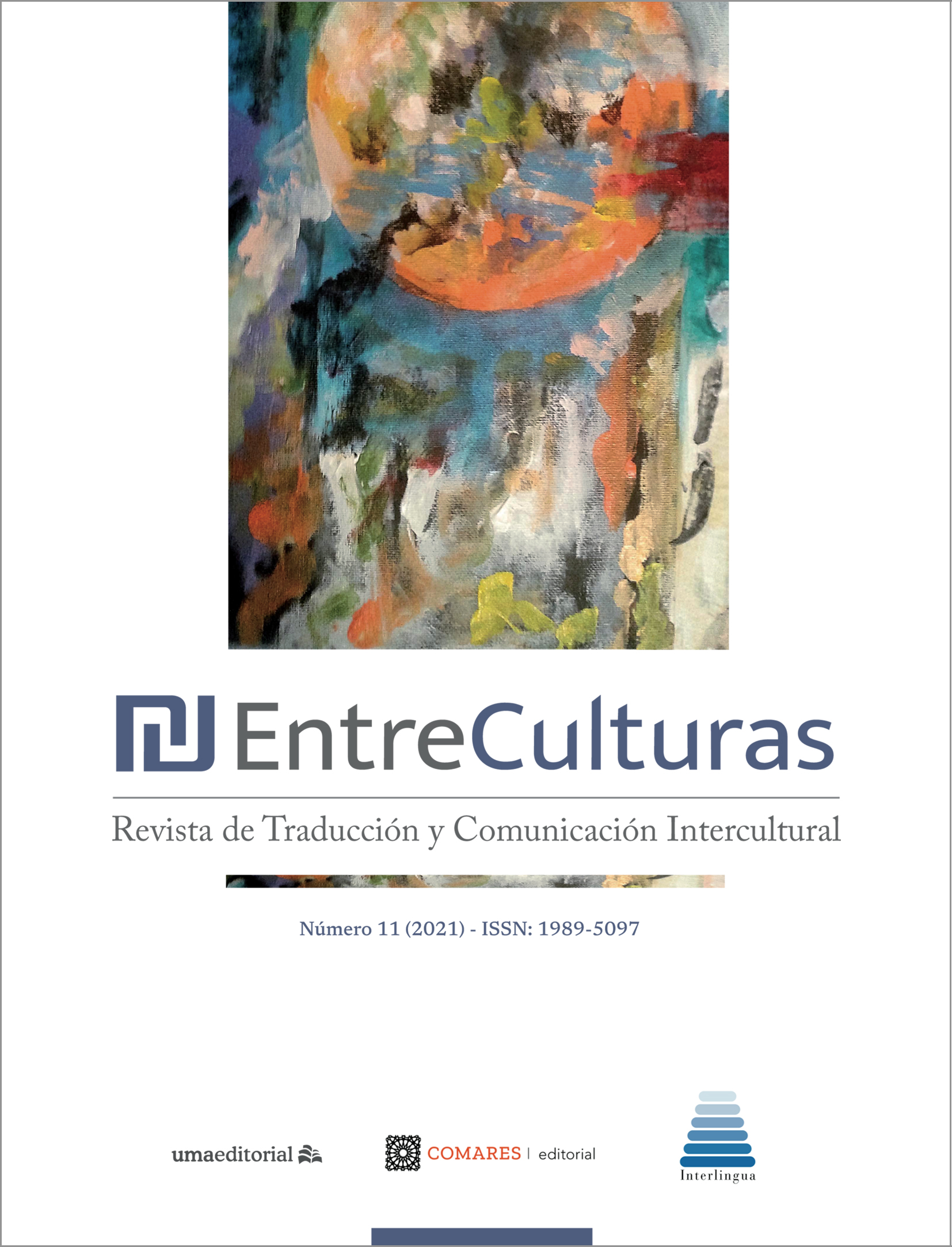Beauty and Attraction in Literary Translation
DOI:
https://doi.org/10.24310/Entreculturasertci.v1i11.12102Keywords:
Literary translation, beauty, attractionAbstract
The approach to literary translation proposed here relies on three concepts: beauty, generated from ambiguity; attraction, produced on the reader-translator by the source text; and the effect caused by the source text and the translated text. Attraction is linked to what we may deem beautiful, or to what we could call the beauty effect; and it is what triggers the movement towards translation. The reader-translator must thus be seduced by the text while at the same time trying to make up for the absence generated by it. As for the effect, that the translator must identify in order to eventually reproduce it, it is linked to the internal cohesion of the text, to the marks left by the author and to the ambiguity inherent in the aesthetics of the text. In other words, the effect of the text is what the translator should yearn to reproduce, after finding his or her way.
Downloads
Metrics
References
ARREGUI BARRAGÁN, Natalia (2009): ApreHendiendo al leer: Eduardo Mendoza y la traducción literaria (manual para el traductor novel). Granada, EUG.
AUSTIN, John Langshaw (1962): How to do things with words. Cambridge, Harvard University Press.
BALZAC, Honoré de (1931): Le Chef-d’œuvre inconnu. Paris, Ambroise Vollard.
BARTHES, Roland (1974): El placer del texto, traducción de Nicolás Rosa. Madrid, Siglo XXI.
DURAS, Marguerite (1991): El amante de la china del norte, traducción de Beatriz de Moura. Barcelona, Tusquets.
ECO, Umberto (1994): La estructura ausente, traducción de Francisco Serra Cantarell. Barcelona, Lumen.
ELLMANN, Richard (1977): James Joyce, Oxford, Oxford University Press.
FOLKART, Barbara (1990): "La fonction heuristique de la traduction". Meta, vol.35, nº1.
FOUCAULT, Michel (2000): El pensamiento del afuera. Traducido del francés La pensée du dehors por Manuel Arranz. Valencia, Pre-textos.
HANDKE, Peter (1993): La ausencia, traducción de Eustaquio Barjau, Madrid, Alianza.
LACAN, Jacques (1966): Écrits I. Paris, Seuil.
JOLICŒUR, Louis (1985): Les adieux. París, Christian Bourgois, traducción de Los Adioses de Juan Carlos Onetti.
JOLICŒUR, Louis (1985): Le puits. París, Christian Bourgois, traducción de El pozo de Juan Carlos Onetti.
KANT, Emmanuel (1966): Le jugement esthétique. Paris, Presses Universitaires de France.
MOUNIN, Georges (1955): Les belles infidèles. Paris, Cahiers du Sud.
RICŒUR, Paul (2001): Del texto a la acción. Ensayos de Hermenéutica II, traducción de Pablo Corona. Buenos Aires, Fondo de Cultura Económica.
SARTRE, Jean Paul (2003): ¿Qué es la literatura? traducción de Aurora Bernárdez. Madrid, Losada.
ZECCHI, Stefano (1990): La Bellezza. Turín, Bollati Boringhieri.
SCHILLER, Friedrich, [En línea. Consulta: 10 de septiembre de 2020]: Cartas sobre la educación estética del hombre. Decimoquinta carta. http://www.antorcha.net/biblioteca_virtual/filosofia/schiller/15.html;
Downloads
Published
How to Cite
Issue
Section
License
All contents published in Entre culturas. Revista de traducción y comunicación intercultural are protected under the Creative Commons Attribution-NonCommercial-ShareAlike 4.0 International (CC BY-NC-SA 4.0) license. All about this license is available in the following link: <http://creativecommons.org/licenses/by-nc-sa/4.0>
Users can copy, use, redistribute, share and exhibit publicly as long as:
- The original source and authorship of the material are cited (Journal, Publisher and URL of the work).
- It is not used for comercial purposes.
- The existence of the license and its especifications are mentioned.
There are two sets of authors’ rights: moral and property rights. Moral rights are perpetual prerogatives, unrenounceable, not-transferable, unalienable, imprescriptible and inembargable. According to authors’ rights legislation, Entreculturas. Revista de traducción y comunicación intercultural recognizes and respects authors moral rights, as well as the ownership of property rights, which will be transferred to University of Malaga in open access. The property rights are referred to the benefits that are gained by the use or the dissemination of works. Entreculturas. Revista de traducción y comunicación intercultural is published in an open access form and it is exclusively licenced by any means for doing or authorising distribution, dissemination, reproduction, , adaptation, translation or arrangement of works.
Authors are responsable for obtaining the necessary permission to use copyrighted images.





7.png)
